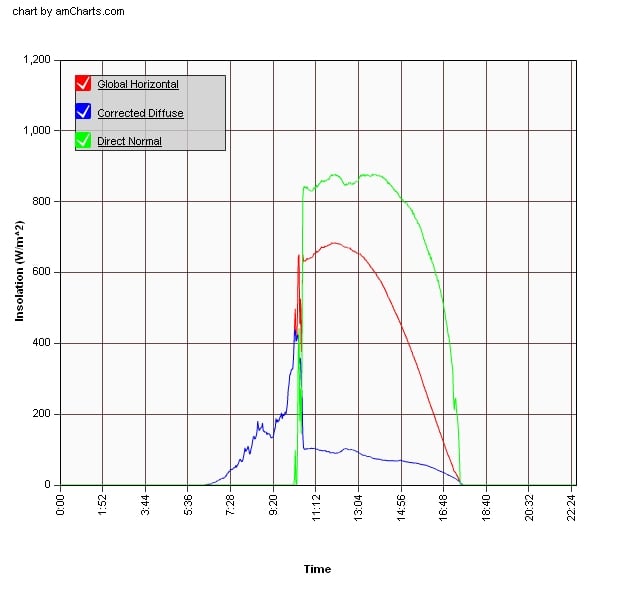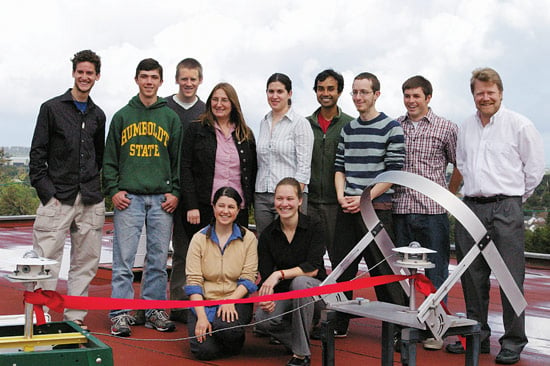The Solar Radiation Monitoring Station
What It Is
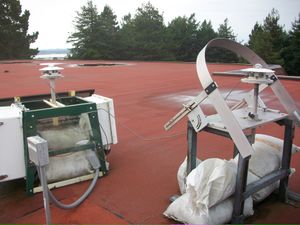
The Solar Radiation Monitoring Station (SoRMS) project is one of Humboldt’s Renewable Energy Students Union’s (RESU) responses to the need for more renewable energy. The basic idea behind this specific system is not to create power but to collect information on solar power. The focus of the SoRMS project is to collect local solar radiation data and make data available to the public. This will then be used to give a more comprehensive idea of the energy that can be expected from solar systems. Because most solar research facilities do not deal with thick cloud cover, SoRMS is producing data that will help to fill in this gap and give people a better idea about solar powers productivity in areas that deal with more clouds and fog, especially here on the North Coast.
How It Works
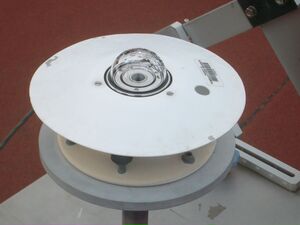
The amount of energy coming from the sun is measured with the use of an Eppley Precision Spectral Pyranometer (PSP)[[[1]]. This is done by comparing the heat absorbed through radiation of an absorptive black surface and a reflective surface. There are two of these PSP’s, one is in the open sunlight and one is covered by what is called a shadow band. The shadow band is seen bent around the PSP on the right of the photo (above)and is only blocking the direct sun light.
The PSP that is exposed to direct sunlight measures what is called global radiation. This global radiation is a composition of direct radiation, coming straight from the sun directly to the PSP and the diffuse radiation which is other light waves that have been bounced, bent, or reflected though the earth’s atmosphere. The second PSP, with the shadow band blocking the direct radiation ,only receives diffuse radiation. By using the data from each of these PSP’s, the diffuse radiation is subtracted from the global radiation to obtain the amount of direct radiation which is the primary source of solar energy.
How To Access Information
The data that SoRMS produces is collected by a Campbell ScientificCR510 data logger, and connected to the internet using a NL-100 Network Link Interface.
The Network Link Interface allows the National Renewable Energy Laboratory to access SoRMS data remotely to download data and make the data available online.With the recently added Network
Link Interface, the information collected by the SoRMS project is now promptly accessible to the public.
With the Network Link Interface, anybody can view the data that SoRMS collects via internet There are currently two websites that have the data posted:
- http://resu.humboldt.edu/?q=node/259 has a live feed of data.
- http://www.nrel.gov/midc/hsu/ is updated every hour
How It's Run
The SoRMS project is run by Humboldt State University’s Renewable Energy Student Union which collaborates with the Schatz Energy Research Center. All the people working to keep this project running are volunteers. These volunteers keep the information as accurate as possible by maintaining the systems continuity.
Maintainence
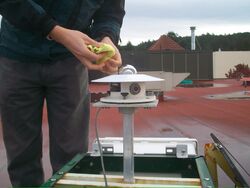
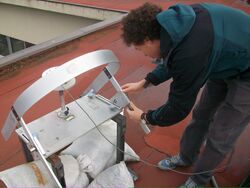
To keep this information consistent every morning one of the HSU volunteers clears the PSP’s of any dew accumulation (seen left) and adjusts the shadowband (seen right). This dew accumulation can cause short term spikes and holes in the energy absorption due to the light bending as it passes through dew droplets. [[2]]. The Shadowband is adjusted year round in relation to the earths rotation and position of the sun. [[3]]. The whole system is powered by solar panels, eliminating operation costs and replacing the need for batteries or an attachment to a power grid.
How It's Funded
Because this project is maintained by volunteers, the only funding required is to cover the costs of shipping the PSP’s to the National Renewable Energy Laboratory for recalibration. This is done about every two years. However, the system exists today only because of the initial support of the HSU Sponsored Programs Foundation, the National Renewable Energy Laboratory, Redwood Alliance, Schatz Energy Research Center, HSU Environmental Resources Engineering department, HSU Plant Operations, Marty Reed - HSU Equipment Technician, and the HSU library staff. [4]
